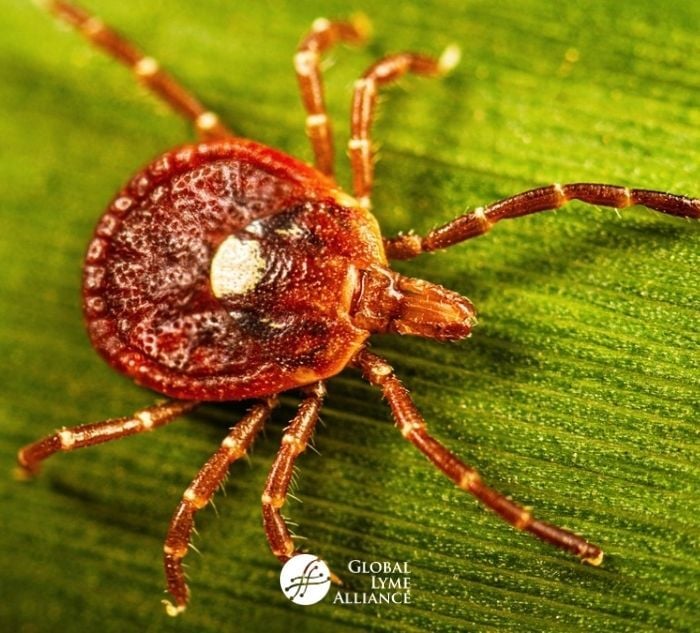
by Jennifer Crystal
For many people, summer means travel, but for Lyme patients, vacationing is not as simple as it was in our healthier days. I miss being able to just throw a pair of pajamas and a toothbrush in a bag and take off for the weekend. Now my baggage is bigger and heavier. I have medications and supplements, specialty foods, and extra pajamas (in case of night sweats) that I have to bring along. I need to consider my daily schedule and my energy levels. Travel is still possible, but I’ve had to make some adjustments.
Many patients write with questions about travel. Can they get on a plane with a PICC line in? Can they bring their medications and supplements on a plane? How far can they travel? I responded to some of these questions in my recent Dear Lyme Warrior…Help post. But here’s a longer practical guide to help you determine if, how, and when you might travel, and what you should keep in mind when you do so.
- Travel abilities—Your stamina for travel will fluctuate. This is probably the most important lesson I can impart. When I was first ill with Lyme and two co-infections babesia and ehrlichia, I could barely walk, let alone travel. It was exhausting to sit in the car and go to a doctor’s appointment. Someone else always had to drive. As my physical and neurological symptoms improved over more than a decade, I have been able to slowly increase my ability to travel. First I could drive myself short distances. Then I could take a short, direct flight if someone was with me. I’ve worked up to a four hour flight now. Hopefully I’ll be able to go even farther in the future, but I also have to remember that progress isn’t linear. With a relapsing condition like Lyme, there will be times when it will seem easy for me to fly to Florida, and times when it will be difficult for me to drive for an hour.
- PICC lines—Yes! You can fly with a port! The important thing is to think about timing and supplies. How long will you be away? If you have a PICC line, how many boluses of medication will you need? Contact your airline to see about bringing your boluses on the plane, especially since most need to be refrigerated. Some airlines allow you to bring them through security in a cooler, but you should make them aware. Be sure to have your written prescription with you. Next, think about where you will store your boluses upon arrival. Is there a secure, easily accessible refrigerator? Be sure to bring extra boluses and extra supplies, and to have the emergency contact information of your doctor. You may also want to ask your doctor what you should do if there’s a problem with your line while you’re away (is there a nurse you can call? Should you go to a local medical clinic?).
- Medications and supplements—When flying, I always carry on all of my medications and supplements in their original bottles. You do not want to run the risk of your medicine being lost in a checked bag. Some people get written prescriptions from their doctors in case they get questioned by airline security. I have never had this problem—prescription bottles with current labels have always sufficed, even when I went out of the country—but you might need this information if you’re traveling with liquid medication (for more information on flying with medication, visit tsa.gov and click “Travel Tips”). If you’re traveling by car, make sure your pill bag is in the car itself, not in an overheated trunk. I tape closed all the compartments of my weekly pill box, so they don’t spill all over my bag. I always bring more pills and supplements than I’ll actually need, in case I get stuck somewhere.
- Health information sheet—Write out a list of your diagnoses, your medications and supplements, your allergies, your dietary restrictions, your practitioners and their contact information, the name and number of an emergency contact, and any other pertinent medical information. I keep a copy of this list in my suitcase, a copy in my purse/wallet, and an e-copy on my phone.
- Pharmacy and doctor information—In case you do get stuck somewhere and need an emergency refill, find out before you go if your pharmacy has a store near your destination, and if they can transfer your prescriptions. Also be sure to have your doctor’s phone number easily accessible, and have it written on your health information sheet.
- Food—Make sure you will be able to get foods that fit your dietary restrictions at your travel destination. Plan in advance—read restaurant menus online, research what grocery stores are nearby, talk to your hosts, call your hotel to see if there will be a refrigerator in your room. I always pack extra gluten-free snacks, even if I wind up putting them all back in my cupboard when I get home. Remember to bring meals and snacks in your carry-on, too. Additionally, I always carry a water bottle, and I bring rehydration tablets if I’m going to be somewhere where I won’t be able to find electrolyte-enhanced water (which I often need due to nightsweats).
- Plan extra recovery time before and after your travel—Depending on how far you are traveling, you may need extra time to rest upon arrival. When I fly somewhere, I don’t do anything else on the travel day besides sleep and eat, and often I need the following day to recuperate, too. When I travel by car, I make sure that there will be a quiet place for me to nap upon arrival. Build in a couple days for recuperation upon your return, too. This means in general that you will need more time for travel—a three-day trip may turn in to a week-long endeavor.
- Budget—The reality of traveling with Lyme disease is that it’s probably going to cost more than if you weren’t ill, especially if you’re a budget-minded traveler like me. I used to take red-eye flights or make multiple connections, because those options cost less. I can’t do that anymore. In order to save enough energy to function at my destination, I need to take direct flights at times that work well in my schedule, and that’s more expensive. To do otherwise though would jeopardize my health, and that would be even more expensive.
- Have a buddy!—It’s much, much easier to travel when you’re accompanied by someone who understands your needs. Having someone to carry your bags, to drive, to help you navigate a new area, to help you find appropriate foods, all this makes travel much more feasible for Lyme patients. Make sure your travel companion is aware of your needs and how they might impact your itinerary. (For example, if you need to nap every afternoon, will there be a way for you to do that without disrupting everyone else’s day? Or will others be okay taking a midday siesta, too?).
- Ask yourself, is it worth it?— Always ask yourself, is the distance of this travel, and the energy it will take out of me, worth it? Is this someplace you really want to go or someone you really want to see? Will the travel jeopardize your health? Think about costs of travel not just in terms of financial costs, but also in terms of costs to your health, including downtime.
Wishing you safe travels to farther and farther destinations!

Jennifer Crystal
Writer
Opinions expressed by contributors are their own. Jennifer Crystal is a writer and educator in Boston. Her work has appeared in local and national publications including Harvard Health Publishing and The Boston Globe. As a GLA columnist for over six years, her work on GLA.org has received mention in publications such as The New Yorker, weatherchannel.com, CQ Researcher, and ProHealth.com. Jennifer is a patient advocate who has dealt with chronic illness, including Lyme and other tick-borne infections. Her memoir, One Tick Stopped the Clock, was published by Legacy Book Press in 2024. Ten percent of proceeds from the book will go to Global Lyme Alliance. Contact her via email below.






